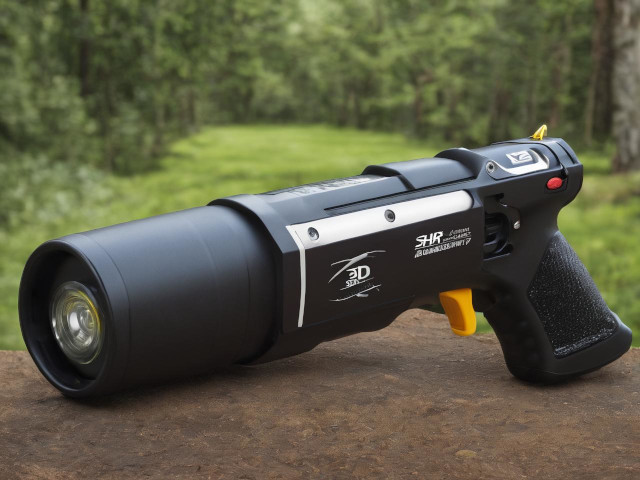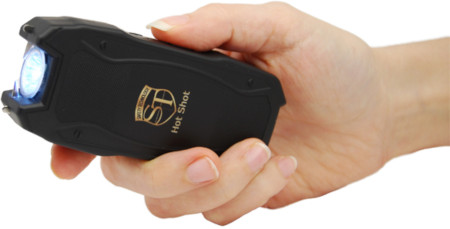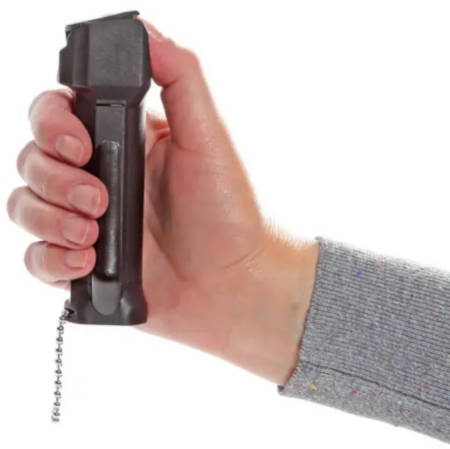Types of Non-Lethal Weapons for Self-Defense & Law Enforcement

Non-lethal weapons are game-changers for personal safety and law enforcement—delivering protection without deadly force. From stun guns to pepper spray, these tools deter threats effectively, offering peace of mind for civilians and control for officers. This guide breaks down the main types, their uses, and top picks from TBOTECH to keep you safe. Ready to explore your non-lethal self-defense options? Let’s dive in and gear up.
Electric Weapons – Stun Guns & Tasers
Electric weapons pack a shock to stop attackers in their tracks, making them a go-to for self-defense and police work. They disrupt muscle control with high-voltage, low-current charges—non-lethal but powerful enough to buy you time. TBOTECH offers top models for any scenario.
- Stun Guns: Hot Shot (90M volts)—compact, contact-based power. Hot Shot Stun Gun
- Tasers: TASER Pulse (15-ft range)—distance incapacitation. TASER Pulse
- Use: Ideal for close encounters or standoffs—versatile protection.
90M volts in a pocket-sized package.
Chemical Weapons – Pepper Spray & Tear Gas
Chemical weapons use irritants to blind and disorient, giving you an edge without lasting harm. Pepper spray is a civilian favorite, while tear gas suits law enforcement’s broader needs—both excel in non-lethal defense. Shop TBOTECH for the best options.- Pepper Spray: Wildfire Gel (25 ft)—sticky, wind-resistant. Wildfire Gel
- Tear Gas: Police Mace—crowd control powerhouse. Police Mace
- Edge: Wide reach, quick effect—stops threats fast.
Pepper Spray and Tear Gas All in One
Impact Weapons – Batons & Beanbag Rounds
Impact weapons rely on force to subdue, offering a physical deterrent without firearms. Batons extend your reach, while beanbag rounds pack a punch from a distance—both are staples in law enforcement and home defense. TBOTECH’s batons are built to last.
- Batons: Expandable Steel—portable, powerful strikes. Expandable Batons
- Beanbag Rounds: Shotgun-fired—less lethal impact.
- Use: Close or mid-range control—non-lethal precision.
Related: Impact Weapon Self-Defense Guide
Other Non-Lethal Tools
Beyond the big three, smaller tools can still save the day—alarms scare off attackers, and everyday items double as weapons. These non-lethal self-defense options are easy to carry and deploy, boosting your safety toolkit. TBOTECH has you covered.
- Alarms: Loud deterrents—draw attention fast. Personal Alarms
- Improvised: Keys, umbrellas—turn ordinary into defense.
- Why: Quick, simple—extra layers of protection.
Legal Considerations
Non-lethal weapons are legal in most U.S. states, but rules vary—know your local laws to stay compliant. They’re designed for self-defense, not aggression, so proper use is key. TBOTECH ensures you’ve got legal, effective options.
- Laws: CA limits pepper spray size; NY restricts tasers—check yours.
- Use: Self-defense only—misuse risks trouble.
- Tip: Training keeps you safe and legal—learn before you carry.
Shop Top Non-Lethal Weapons
Ready to protect yourself? TBOTECH’s best non-lethal weapons—stun guns, pepper spray, batons—offer power and peace of mind. Use code NONLETHAL10 for 10% off and gear up today!
Add your comment now!
Post CommentRecent posts
-
03/12/2025Best Stun Guns for Self-Defense in 2025
-
03/11/2025How to Prevent Kidnapping – Top Safety Tips
-
03/11/2025What Do Rapists Look For? 10 Red Flags to Avoid


